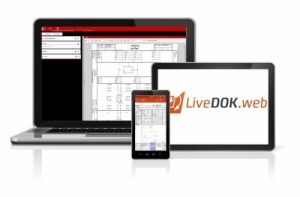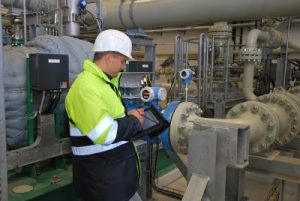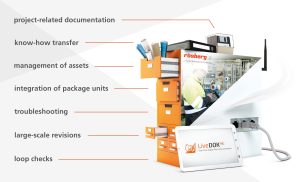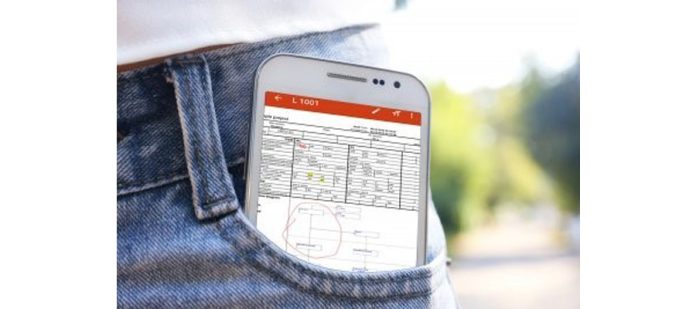Specialist articles on Industry 4.0 generally emphasize the aspect of technical feasibility of the consistent, intelligent networking of machines, processes and personnel: What gateways, protocols and platforms will be needed to interlink machines from different manufacturers? What legal requirements have to be observed? How can security be designed to avoid hacker attacks? However, one aspect that is often overlooked is this: Digitalized plants and processes can only be reliably administered if documentation is available that reflects the current status of the production plants. In many places reality is still far removed from Plant Documentation 4.0 – despite the fact that it is just as essential to the success of Industry 4.0 as the necessary communication techniques and all security concepts
We are living in a time of perpetual change. This is also reflected in industrial production. Manufacturing processes are continually adapted and optimized; products are increasingly being individually manufactured. This is not new, because in the past, too, production plants were in a state of perpetual change: failed components were replaced, software patches and updates were installed, process optimization programs were developed, and much more. Nevertheless, this trend is gaining speed and processes are becoming more dynamic.
Reliable documentation of as-built status
As-built documentation – meaning documentation that reflects the actual state of a new plant – has always been required for commissioning, but in fact the time and resources involved in preparing the relevant documents is always immense. And controlling the delivered documents, to make sure they really do tally with plant reality, is always very time-consuming – thus quality control process is generally confined to some random checks. Thus often enough, plant documentation does not even correspond to plant reality at the start – and even if it does correspond initially, the task of keeping the status of this documentation up to date is anything but trivial. The bigger and more complex the plant, the greater this challenge appears. It may even sound a little schizophrenic to be talking about digital twins on the one hand, whereas in many places a daily struggle is still going on to master plant documentation with the aid of paper documents, Excel lists and complex file structures. However, this is exactly where Plant Documentation 4.0 can make a vital contribution, especially if a system is also able to simplify the management of changes.

Current status of all built-in components – and much more
In sectors such as petrochemicals, chemicals, logistics, manufacturing, in power plants, plant construction or the pharmaceutical industry, production processes are generally complex, and plants often assume gigantic proportions. Thus these sectors of industry have had to rely on digital documentation for a long time now to keep track of the as-built status of their plants and manage the relevant interrelated processes. So it is not surprising that a company like Rösberg Engineering GmbH from Karlsruhe – already active in these sectors for decades – developed digital solutions many years ago in order to keep an overview of the flood of information in these types of plants. Christian Stolz, Account Manager Plant Solutions at RÖSBERG Engineering GmbH comments: “With our I&C-CAE system ProDOK we primarily document the planning and construction of plants. However, it is also important to know the current status and components built in during the operational phase. Our software tool LiveDOK (Fig. 3) helps with the administration and documentation of changes. A main focus of the tool is on simply find documentation updates and enabling the changes to be made available to everyone quickly and easily.”

Various use cases benefit from Plant Documentation 4.0
When envisaging Plant Documentation 4.0 probably the first aspect to be considered is the advantages for maintenance. Here, of course, it is extremely useful to know the current state of the plant and be able to easily document the changes. “To do this, maintenance crews can simply enter the change on a tablet with a stylus (Fig. 4), and it is saved together with the information about who made the change, when, and explanation if necessary”, says Stolz. “Workflows built into the system then ensure that the original documentation is reviewed regularly and thus stays clear and up-to-date.”


In addition to maintenance, many other areas benefit from digital documentation (Fig. 5). These include e.g., troubleshooting, large-scale revisions, project-related documentation, loop checks and the management of assets, the integration of package units, and know-how transfer. And when it comes to audits, it certainly pays off to have up-to-date, legally compliant documentation at hand at all times.
Troubleshooting, large-scale revisions and loop checks
When something goes wrong, every minute counts. In a situation of this kind valuable time is lost if the current documentation status of the plant first has to be assembled – in the worst case, inability to react fast enough may result in damage or danger to people and the environment. In large-scale revisions, too, time is usually tight. Numerous employees need to be coordinated and very many changes made to the documentation simultaneously. This makes it all the more important to ensure that everyone involved in the process has access to the current documentation at all times. Similarly, loop checks also involve the coordination of large numbers of employees and the structured execution of various tasks.
Managing assets and package units
Digital documentation is also beneficial for effective asset management – for instance, when a manufacturer discontinues an asset, making it necessary to know how many of the relevant components are built into the plant and where; or when compiling an overview of components that will no longer receive support in the near future. Only a company managing its assets effectively can keep production running reliably. Another aspect that necessitates digital documentation is the trend in the process industry towards integrating Package Units, meaning the distribution of large plants into smaller units. This raises the question of how the documentation that is delivered together with a functional unit can most easily be transferred into the already-existing plant documentation.
Project-related documentation and know-how transfer
When engaging in extensive plant retrofit or extensions, or for inspection purposes, many project-related documents also have to be immediately available as and when required. If these documents only exist in paper form, or are only available from different sources and in assorted file formats, compiling them is effort intensive and not overly efficient. Another advantage of consistent digital documentation is that know-how can be preserved, because the knowledge no longer exists solely in the minds of experienced employees. This substantially facilitates knowledge transfer to new employees.
“In all these and many other use cases, LiveDOK has been proving its worth for decades now” Stolz says, and adds: “With digitalization the focus was on the PC, but with Industry 4.0 the focus is on the Internet. This also applies, so to speak, to Plant Documentation 4.0. We have been creating digital documentation for a long time now, but we have consistently developed our concepts further, for instance regarding cloud enablement, in order to stay with the pulse of the times. Thus our customers get a tried and tested product that uses today’s state-of-the-art technologies to fulfil the technical and legal requirements of tomorrow.” In the use cases described above, the documentation tool enables documents to be found fast, provides a realistic overview of the components built into the plant while helping to keep documentation up-to-date, ensures standardization in documentation in line with current legal requirements, gives all disciplines involved in a project access to the documentation without media discontinuity, and ensures that everyone in the team is working with the same documents.
Getting started is easier than you think
Companies who wish to consistently implement Industry 4.0 cannot do so without digital, cloud capable plant documentation, especially where large plants are concerned. Nevertheless, many companies are still put off by the initial effort and expense of digitalizing their documentation at all in the first place. Here the process automation experts can reassure them – numerous projects carried out in the past have shown that getting started is much easier than users generally fear. “And not only that – very often digitalization opens up many optimization opportunities, so the effort pays off much faster than many people think”, says Stolz, speaking from his own experience.








